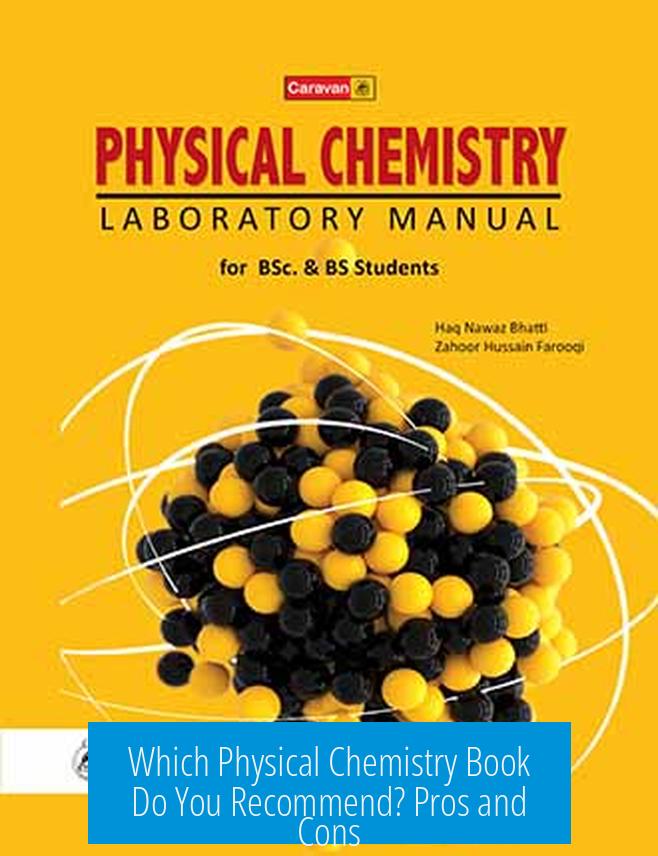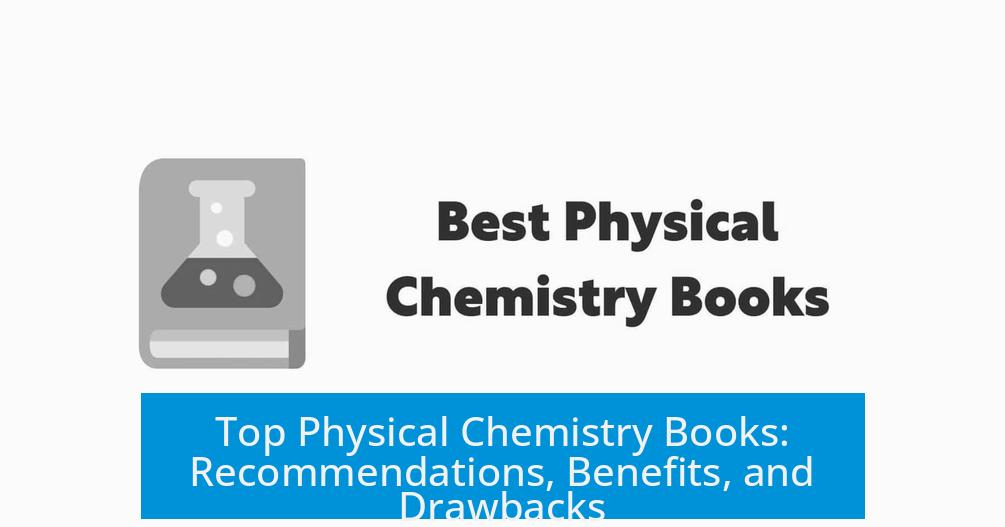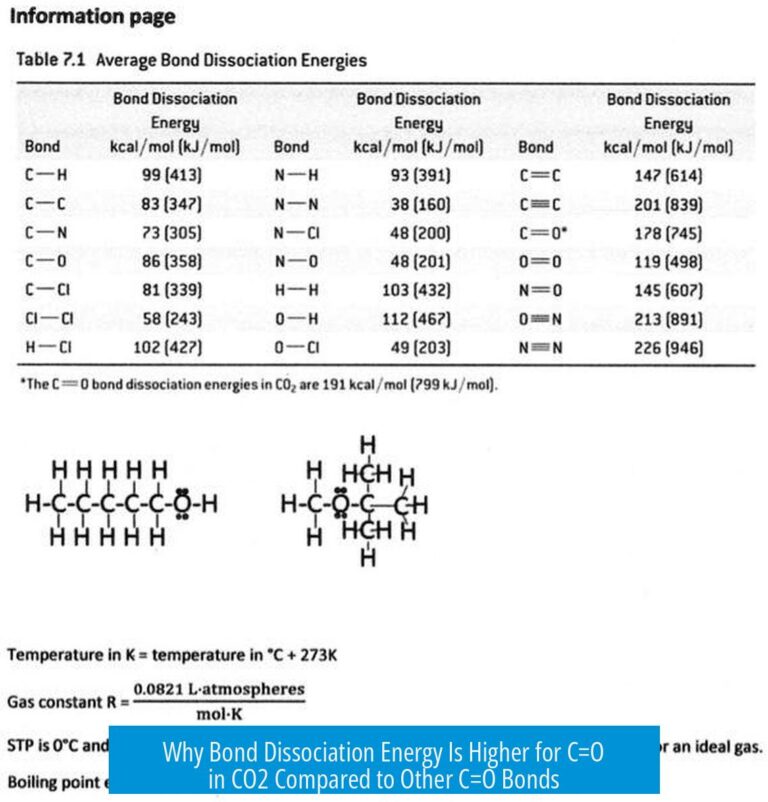Which Physical Chemistry Book Do You Recommend? Pros and Cons

The most recommended physical chemistry textbook is McQuarrie’s “Physical Chemistry” (often called the “Red Book”). It excels in explaining concepts with detailed step-by-step mathematical derivations. The text provides comprehensive explanations and strong problem-solving approaches. It is ideal for students seeking a deep understanding of physical chemistry on a molecular level.
1. McQuarrie’s Physical Chemistry (“The Red Book”)
McQuarrie’s textbook is highly praised for its thorough treatment of physical chemistry fundamentals, especially its derivations and logical flow. It uses mathematics—algebra, calculus—to explain concepts but does so in a way accessible to chemists.
Pros

- Step-by-step derivations of equations, clarifying assumptions
- Logical explanations paired with well-designed problems
- Strong emphasis on molecular-level understanding
- Chapters clearly state their objectives
- Good integration of mathematical rigor without overwhelming readers
Cons
- Figures and diagrams can be hard to interpret on first reading
- Writing style may feel dry to some readers
- Requires solid grasp of algebra and calculus
“The book is extremely thorough when going through all of the derivations of equations and gives pretty good logical explanations while going through the problems as long as you understand how the algebra and calculus works.”
“The biggest con with it however is that the figures which go along with some of the book can be quite difficult to understand the first time you are looking at them.”
Users note that McQuarrie will foster true understanding of physical chemistry. It is often contrasted with Atkins, which might help pass courses but lacks some depth.
2. Atkins & De Paula’s Physical Chemistry
Atkins & De Paula’s text is a common choice as a required or introductory textbook. It is more visually appealing and less dry, making it approachable for beginners.
Pros
- More pleasant and visual figures
- Less dense and more readable style
- Decent practice problems
- Good starting point for topics in physical chemistry
Cons
- Explains poorly the reasoning behind equations
- Can be wordy (prolix)
- Less depth than McQuarrie’s text
- Often requires supplementary books to cover gaps
“Atkins can make you pass the class, but McQuarrie will make you understand physical chemistry.”
“If you are not comfortable with math, Atkins may still be fantastic, but you will probably need additional texts to complement it.”
The consensus suggests Atkins is suitable for students needing a less mathematically intense introduction. However, for mastery, McQuarrie is preferred.
3. Levine’s Quantum Chemistry
Levine’s text is highly recommended for quantum chemistry, a major pillar of physical chemistry. However, it is less favored as a general physical chemistry textbook by comparison.
- Good coverage of quantum chemistry
- Not the best for general physical chemistry topics
Many prefer McQuarrie or Atkins for broader physical chemistry content and may choose Levine specifically for quantum-focused study.
4. Castellan’s Physical Chemistry
Castellan’s book is informative and rigorous, featuring strong mathematical content intended for students comfortable with heavier math.
- Highly informative and thorough
- Mathematically rigorous
- Descriptions remain clear despite math intensity
Some readers find it too math-heavy. It’s suitable for those looking for a serious, detailed approach outside the McQuarrie-Atkins pair.
5. Sandler’s Chemical, Biochemical, and Engineering Thermodynamics
Sandler’s text is recommended primarily for thermodynamics, especially phase equilibrium and chemical engineering perspectives. It complements chemistry-focused books by providing detailed multi-phase equilibrium insight.
- Excellent for thermodynamics of phase equilibrium
- Chemical engineering viewpoint provides a different approach
- Good supplement for multi-phase equilibrium topics
This text is less chemistry-focused and better viewed alongside standard physical chemistry resources.
6. Additional Recommended Resources
- Use both McQuarrie and Atkins for general physical chemistry and thermodynamics
- Laidler’s textbook is good for chemical kinetics
- Adamson is recommended for surface chemistry
- Consider multiple resources to gain different perspectives
Students are advised to strengthen calculus skills before tackling physical chemistry, due to the mathematical foundation required. Several recommend using university libraries or online resources like interlibrary loans and LibGen for cost-effective access.
Comparison Table: Physical Chemistry Books
| Book | Pros | Cons |
|---|---|---|
| McQuarrie | Thorough derivations Logical explanations Strong molecular focus Good practice problems | Difficult figures initially Dry writing style Requires good algebra/calculus |
| Atkins & De Paula | Visual and pleasant diagrams Less dry Decent practice problems Good introductory text | Superficial explanations Wordy content May need supplements Less depth overall |
| Levine | Strong quantum chemistry coverage | Less favored as general physical chemistry text |
| Castellan | Rigorous Informative Strong math content | Math-heavy for some readers |
| Sandler | Excellent thermodynamics and phase equilibrium Chemical engineering perspective | Less chemistry-focused Complementary rather than standalone text |
Key Takeaways
- McQuarrie is the gold standard for deep understanding and mathematical rigor in physical chemistry.
- Atkins & De Paula offer a visually clearer and less dry introduction but may lack depth and rigorous explanation.
- Levine excels in quantum chemistry but is less recommended for general physical chemistry.
- Castellan provides a mathematically rigorous approach, suitable for advanced learners.
- Sandler’s text is valuable for thermodynamics and phase equilibrium, especially from an engineering perspective.
- Using several resources enhances comprehension; no single text covers all facets perfectly.
- Strong math skills improve learning outcomes in physical chemistry.
Which physical chemistry book is best for deep understanding?
McQuarrie is ideal for deep learning. It offers detailed derivations and logical explanations. It focuses on a molecular-level view and strengthens math skills alongside physical chemistry concepts.
What are the drawbacks of using McQuarrie’s book?
The figures can be hard to grasp at first. The content is sometimes dry. A solid foundation in algebra and calculus is necessary to follow the material well.
Is Atkins & De Paula a good alternative to McQuarrie?
Atkins has clearer visuals and is less dry. However, it lacks deep explanations behind equations and can feel wordy. It suits beginners but may require extra materials for full understanding.
Which book is recommended specifically for quantum chemistry?
Levine’s book is a good choice for quantum chemistry topics. It is less favored as a general physical chemistry textbook compared to McQuarrie or Atkins.
Are there any recommended books for thermodynamics and phase equilibrium?
Sandler’s Chemical, Biochemical, and Engineering Thermodynamics is recommended for phase equilibrium. It leans towards a chemical engineering perspective and works well as a supplement.
Should I rely on just one textbook for physical chemistry?
No. Using multiple resources like McQuarrie, Atkins, and others improves understanding. Refreshing calculus helps. Libraries and online resources can reduce costs.





Leave a Comment